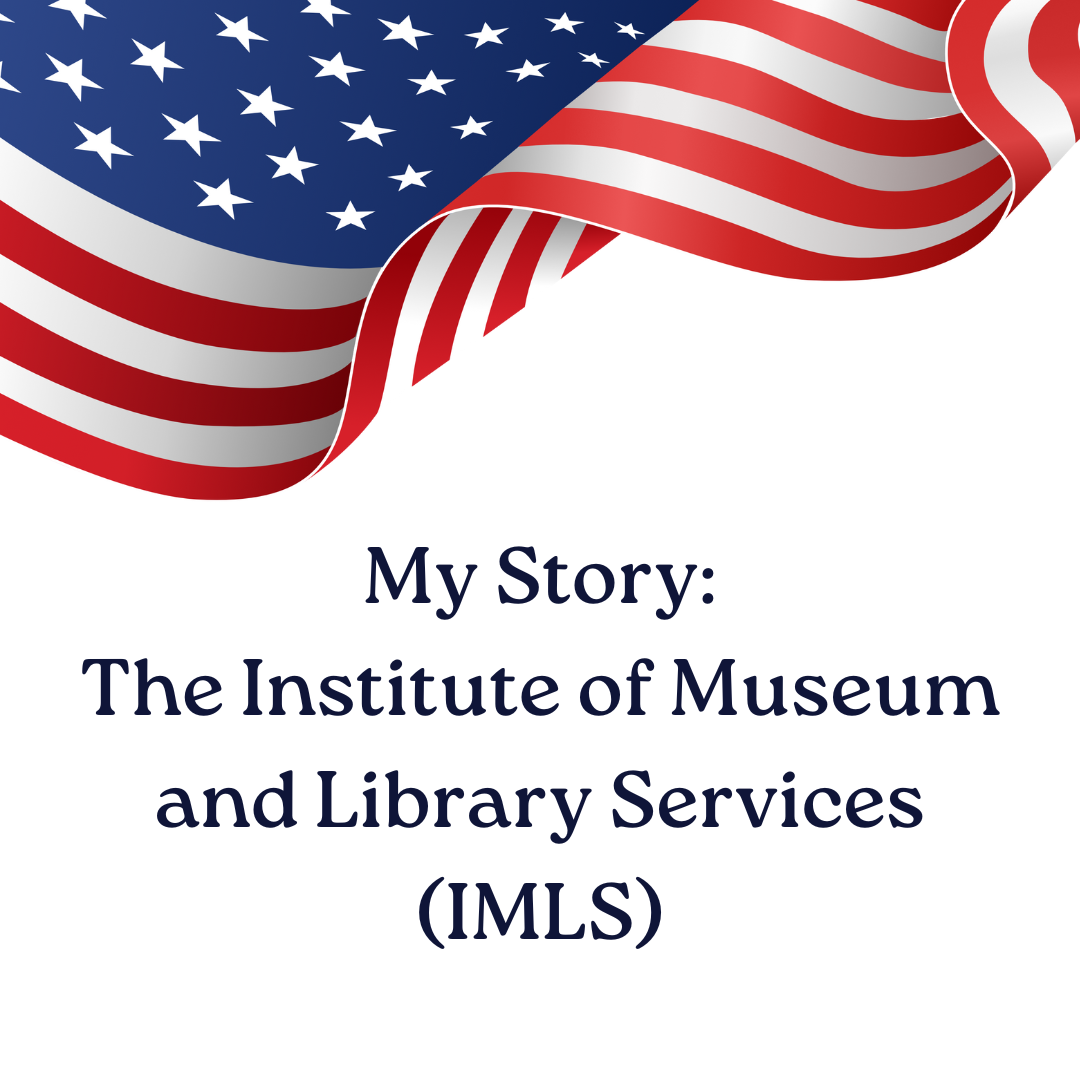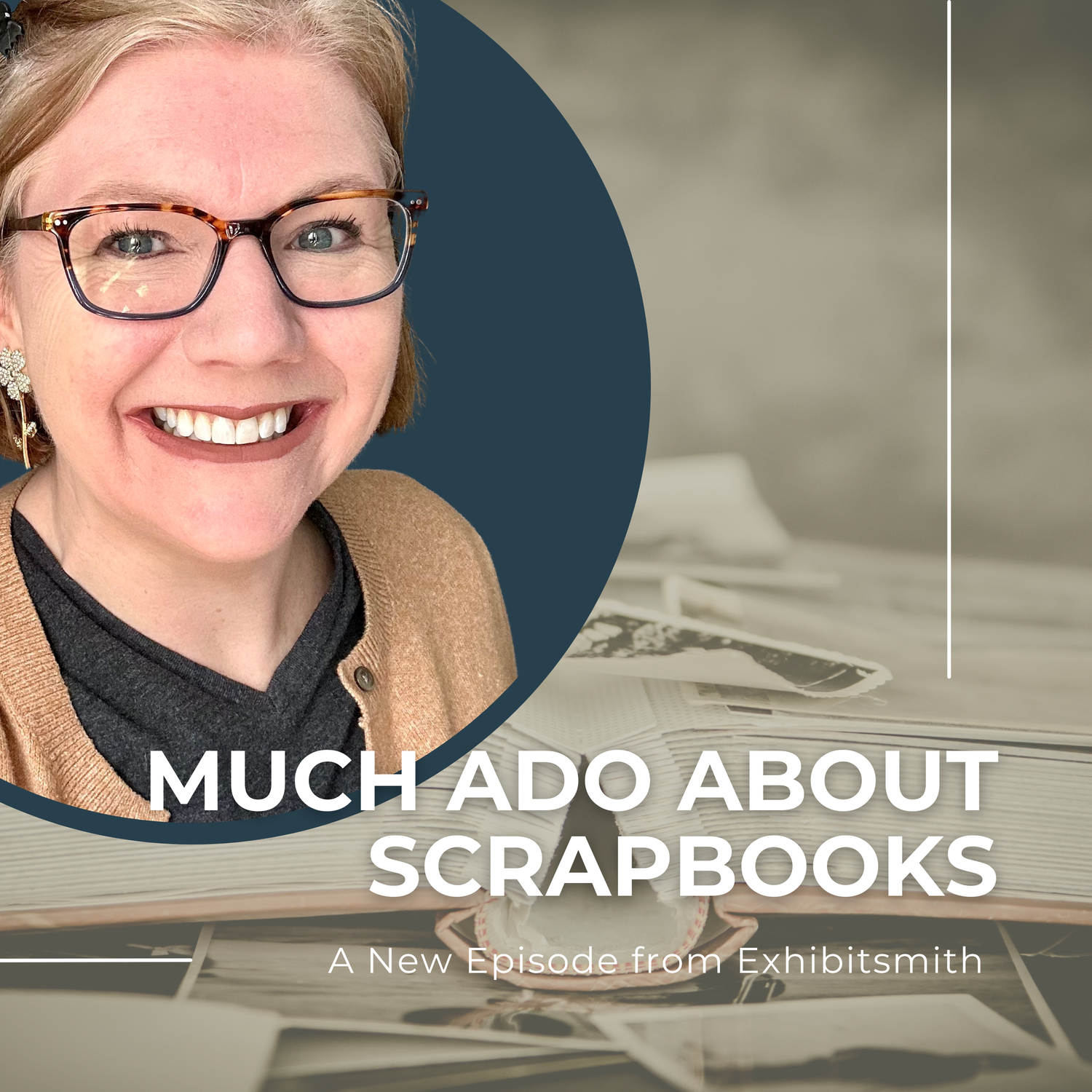
Back to School: What do School Librarians do All Day?
This month we’re going “back to school”, and we’re focusing on school libraries, a memorable field trip, and a few school-themed treasures I found in the archives. (And be sure to scroll to the bottom and see Hangerbee’s new Pants Hangers!)
I recently had a fantastic conversation on the Exhibitsmith podcast with Jill Sullivan-Bennin, the District Library Media Specialist for the Sherrard Community School District in Western Illinois.

Why Museums Matter
This month I’m focusing on the big question: Why Museums Matter. I recently had a wonderful conversation on the Exhibitsmith podcast with Nathan Kemler, Director of Galleries and Collections at the Grand Valley State University Art Museum in Michigan, about Why Museums Matter (and why they still matter). We talked about how museums in the 21st century can't just open their doors and expect people to visit like they could in the past. Today's museum visitors have different reasons for visiting - or not visiting - museums, and Nathan shared some of the creative, unique, and inspiring ways that he and his staff reach out to both the university community and the general public to make everyone feel invited, welcome, and seen.

The Institute of Museum and Library Services (IMLS): My Story
The following is a letter I sent to my elected officials in March, 2025. I chose to share my personal experience with The Institute of Museum and Library Services with the hope that it might educate others and help our cause.
Thankfully, my representatives already support the IMLS, but many others don’t. So, I decided to share this here with the hope that my story might reach a larger audience. Please encourage your legislators to continue fighting for IMLS, it’s not over yet. - Lindsey

The Power of Photography
If you're familiar with my saving your family photos talks, you'll know that I don't simply start my program by sitting you down and explaining how to save your family photos. I bring a little history into the mix and I go a little deeper. I talk about the beginning of photography and what photography means to us today.
Photography is everywhere. But as we go back in time, photography has meant very different things to us collectively throughout all the decades. For the vast majority of human history, photography wasn't a thing. It wasn’t until 1839, when the daguerreotype hit the world, that photography became the medium we have today.

Rethinking Scrapbooks (Much Ado About Scrapbooks)
Much ado about scrapbooks. Am I right? Anyone who has an old or aging scrapbook in their life knows what I'm talking about. The tape is brittle, the glue has stained everything. The pages are yellowed, made from acidic paper. If you try to peel off a photo, you’re left with a torn page, and the back of the photos is a mess. Things like newsprint - are a lost cause. They have become one with the album. There is no easy way out. Could it get any worse?!

The Typewriter Story (and Their Unexpected Fans)
Twenty years ago, I was working at a large museum, a tourist destination that attracts visitors from all over the world. The building was – and is – full of amazing exhibits, artifacts, and experiences. No two workdays were ever the same, nor were any two museum visits. Things changed there all the time. Well back then, a friend of mine was working with a group of so-called “at risk teens” or maybe they were tweens? and I found out that they were headed to the museum on a field trip. I told my friend to let me know if they had any spare time at the end of their fun, busy, day because I could try to squeeze in a behind-the-scenes tour of the museum’s extensive collection of artifacts. If that would be something they might be interested in.

The Tent (and the Power of Authenticity)
Let’s talk about the power of authenticity. Authenticity is real. True. And when it comes to objects, it might just be what turns something ordinary into something extraordinary. On today’s episode, I’ll be sharing a very creative example of how one museum decided to interpret one of their most special artifacts, to great success.
Why do people usually visit history museums? History museums can vary greatly, but they usually have one thing in common. They interpret the past. And the vast majority of these museums use authentic artifacts to tell their story.

Keeping Spring Cleaning Stress Free (You Have Permission to Get Rid of Stuff!)
You have permission to get rid of things the easy way. If you need a sign from the universe to do it, here it is. Hi, it's me, holding a sign. I recently had trouble clearing out my garage. My somewhat - simple goal to purge some old things that were taking up space proved to be harder than I had anticipated. So, I wanted to take some time today to share my story with the hope that it might help you too.

Grandma's Flowers: Simple Objects Can Feel Extraordinary
Today I’m digging deep into my personal memories to share a story about how an otherwise ordinary object became surprisingly important to me at a very young age. I’m curious whether you’ll be able to relate. I hope you enjoy today’s episode and I invite you to share your stories, too.
I’d like to talk a little more about downsizing, especially the thought process around who in your life might most appreciate your stuff. And not just all your stuff, but particular objects that hold special meaning.

Exploring the Idea of Treasures with Kids
Last (school) year my daughter brought home a Scholastic magazine from school, as she did from time to time. They’d read the articles in class and then she’d bring it home when they were done.
This article made me smile, as it talks about “stuff.” In fact, it asks the question “Toys or Treasures?” which reminds me of what we often think about: “is this item ordinary, or extraordinary?”

Introducing Our New Podcast!
Introducing Exhibitsmith, a podcast brought to you by me, Lindsey Smith. If you’re anything like me, you probably have a lot of stuff - and you might not know what to do with it. I love to help people interpret, preserve, and better understand what they have and what their options are to deal with it. This process can be very overwhelming, especially if you are downsizing, inheriting a houseful of items, or are just tired of the stress or the mess. Believe it or not, I truly believe that artifact and heirloom preservation can be both easy and fun.

Specialty business helps you downsize couture
Did you see this cover story in the Washington Post featuring Julie Wilson and Encore Ballroom Couture? Julie has provided a niche service that helps her customers downsize their personal ballroom collections, knowing that the garments will live on to see another day. This is topic is near to my heart, as I work with organizations and individuals to determine the next chapters for their personal collections.

How to Interpret and Identify a Photograph: AKA How to Look Beyond the Grandma
Have you ever taken the time to really study a photograph, to look beyond the obvious (“yup that’s grandma”) and explore the scene from a different angle? They say “a photo is worth a thousand words”, but have you ever tried do it? To piece together the story behind the pic?
Today we’re delving into this idea with the hope that you’ll be inspired to “look beyond the grandma” and uncover the past.

How to Save a Scrapbook: AKA Much Ado about Scrapbooks
Despite my professional mission to make preservation EASY and FUN, this American Archives Month I’m asking different questions. I’m not here to tell you the HOW, but to remind you of the WHY. To look for the silver lining in these acidic monstrosities (too much?) and be grateful for what they are.
Personally, I love scrapbooks, even if they are deteriorating before my eyes. Because if the scrapbooks didn’t exist, their carefully curated contents would most likely be gone with the wind.

Should I hang this? A Clothing Quiz!
(Originally published at Hangerbee.com)
Here at Hangerbee, our focus is on hangable clothing storage. But with a background working with historic textiles, we fully understand that not every garment should be hung. That’s right! Hangerbee products are NOT the answer to everything. If you have a c1920s silk beaded “flapper” dress, like the one to the right (which is a piece I acquired in poor quality for reference purposes only), do NOT hang it! It’s much safer in a box.
But sometimes the answer is not as clear. Some contemporary garments should be boxed, while I’ve seen many c1840s dresses doing just fine on a padded hanger. To help you answer some questions about the garments in your life/museum/closet, here’s a quiz to get you started:

It's American Archives Month 2021: AKA Why Do We Keep So Much Stuff?
October is American Archives Month and I (Lindsey) have spent many years working in and around archival collections. So, to celebrate, this month I'll be posting a bit "from the archives".
And while I do have dreams to share my love of preservation with the world (and to make it easy and fun), today isn’t about that. Today isn’t about the “how” - it’s about the “why.”

Add Extra Support to Dresses and Gowns: DIY Easy Suspenders!
(This post has been adapted from my original post at Hangerbee.com. Enjoy!)
Have a dress or gown in your life that might need a little TLC? If you plan to keep it hung in the closet for the long term, you might want to consider adding some easy straps. Many antique and vintage dresses need extra support simply due to their age, as organic material breaks down over time. In addition, garments of any age that have heavy skirts will always benefit from some DIY suspenders.
Storing Stuff at Home: Finding the Right Environment Part 4.5 - Dry
I once worked in an archives that suffered from a freak flood, which damaged countless papers which had to be dried piece by piece. I also had a hot water pipe burst at a 90° angle – right on to shelves of museum artifacts. I’ve helped dry out a flooded historical society and once completed an assessment for a collections storage area that had a completely caved in roof.
Dealing with water is a never-ending job.
Storing Stuff at Home: Finding the Right Environment Part 4 - Dry
Welcome to part four of our Storing Clothes at Home: DC⚡DC series. To recap, so far we’ve covered some very basic information that will help you create the best possible storage environment in your home. First and foremost, your vintage, antique, and/or treasured items should be stored somewhere Dark, Cool, Secure, Dry, and Constant. You know, DC⚡DC, like that popular band.
Okay, so not really like “that band”, but I find it helpful to create a mnemonic device to help remember things.

